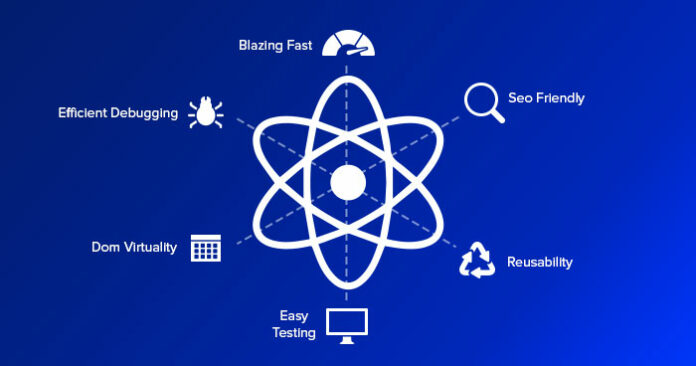React.js is a new trend in front-end development. Before getting into it, Let’s know the components of web pages. It has HTML which contributes for skeletal system.
CSS inserted into HTML and it becomes beautiful and add some features to the web page. Then enters the javascript which is responsible for behavior of web page.
In javascript, it has lot of frameworks. For example:
1) vue.js
2) angular.js
3) Ember.js
4) Meteor
5) Mitril
Though we have lots of frameworks, react.js tops all among other frameworks.
Features of React.js
JSX – It stands for JavaScript XML. It integrate XML or HTML syntax into JavaScript program. Its not necessary to use JSX, but its recommend to do it.
Components – react.js consists of many components. Moreover each component has its own logic and controls. These components can be reusable on large scale projects.
One way data biding – It also components for unidirectional or one way data binding. “Flux” is a design pattern which helps to keeps data unidirectional.
Simplicity – react.js uses JSX file which makes application simple and to code as well as understand. React.js is a component-based approach which makes easy to reuse.
Performance – Its a great performer. The reason behind this is it maintain the virtual DOM. So that we write a virtual component for virtual DOM.
Advantages
It boosts productivity and facilitates further maintenance. Re-use of assets is well-known among designer. Such approach ensures consistent app look and facilities.
It ensures faster rendering of website. Building a large application, its essential to consider how the structure impacts the overall app performance.
react.js guarantees stable code. It makes sure even a small change made in children, would not let parent code any changes. This structure of code binding helps for code stability and app performance.
Its SEO friendly, because it has an ability to deal with a common search engine failure to read javascript. As a result, this can run the server, render it and return the virtual DOM to client’s device.





